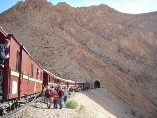Explore tunisia...
Where do you want to go ?
- Tunis Carthage Airport (TUN)
- Enfidha Airport (NBE)
- Monastir Airport (MIR)
- Djerba-Zarzis Airport (DJE)
- Tozeur-Nefta Airport (TOE)
- Carthage (Kart-Hadasht)
- Dougga (Thugga)
- El Jem (Thysdrus)
- Ichkeul National Park
- Kerkouane
- Kairouan
- Sousse
- Tunis
- Bulla Regia (Royal Bulla)
- Chemtou (Simitthus)
- Elles (Megalithic Tombs)
- Haidra (Ammaedara)
- Le Kef (Sicca Veneria)
- Makthar (Mactaris)
- Neapolis
- Oudhna (Uthina)
- Pupput
- Sbeitla (Sufetula)
- Thuburbo Majus

| Home > Tunisia Guide > Tozeur |
|
Tozeur
Tozeur, known as the ‘Pearl of the Jerid’, is situated on the edge of the huge Chott El Jerid salt lake and is both an oasis and a city. It is the commercial centre of the region and is famous for its ‘deglet nour’ (‘finger of light’) dates.
The old quarter (14th century) of the town is called Ouled el Hadef and here you will find the traditional architecture of the region – high, practically windowless walls built with small handmade bricks, with geometric patterns in relief.
What to see
The Old Town
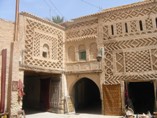
The old quarter (14th century) of the town is called Ouled el Hadef and here you will find the traditional architecture of the region – high, practically windowless walls built with small handmade bricks, with geometric patterns in relief.
Dar Cherait Museum
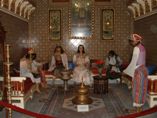
This typical museum is set in a mansion showing a side of the local culture and exhibits treasures of the Tunisian civilization. It is home to a marvelous collection of traditional costumes and scenes of life in the past. Next to it is situated the charming Thousand and One Nights (Dar Zeman).
Eden Palm Ecomuseum
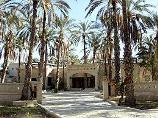
A beautiful garden inside a palm plantation where you can find animals of the desert such us lions of the atlas, ostriches, gazelles, fennecs, jackals, dromedaries, reptiles and raptors.
The Oasis
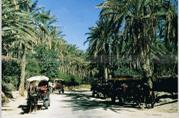
Around the city, nature is far from flat, and tiny valleys and riverbeds are found all over. Between the palms that are penetrating the city from all sides, a complicated irrigation system is found, together with plants and trees, that gives plums, grapes and strawberries.
Ong Jemel
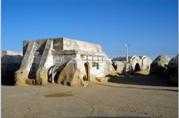
Ong Jmel is the film set, the place where the episode phantom menace of the film star wars was shot. It is a desert area with a special landscape and all the buildings made from wood and plaster for the scenes are still there to be seen, good for photos.
Chott El Jerid
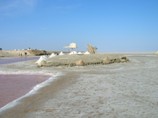
Dry salt lake which covers 5,000 sq km at the most, and lies in the middle of Tunisia. The chott is easily accessed, as an elevated causeway has been built across it, from Kebili to Tozeur. The part on the eastern side is called Chott el Fejej.A trip is highly recommended and offers some great sights, especially when the sun shines on the salty surface.
Red Lizard Train
The Red Lizard train, one under the ownership of the Tunisian ruling bey, takes you from Metlaoui through the winding Gorges of Selja with stops to admire the breathtaking scenery. The scenery changes as one moves into the mountains and track passes through narrow gorges and makes occasional stops for its passengers to absorb the unique ambience.
Nearby
The Mountain Oasis (50 kms)
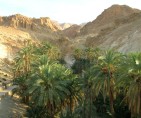
Nefta (30 kms)
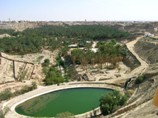
Close to Tozeur and set in a canyon, the oasis of Nefta known as the ‘Corbeille’ (basket), has around half a million date palms and many natural springs. The town itself is something of a religious centre and is home to some hundred or more marabouts (holymen mausoleums).
Douz (122 kms)
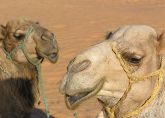
Douz known as the gateway to the Sahara is an excellent location from which to explore the surrounding dunes and oases. It hosts an annual ‘Festival of the Sahara’ where the traditional skills, music and culture of the region are displayed, attracting visitors from near and far.


